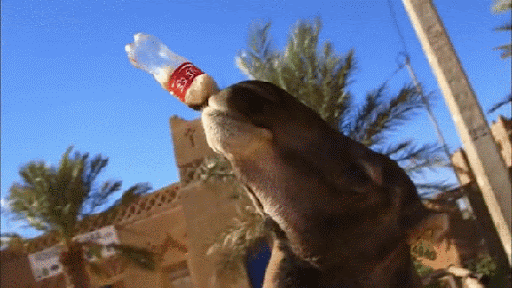This is why Silicon Valley needs ‘camels’, not ‘unicorns’ of technology
- Tram Ho
For a long time in the technology world, the concept of unicorn (Unicorn) has been used to refer to startups (startups) valued at $ 1 billion or more. And ‘camel’ is a new concept, originally coined by Alex Lazarow from Kauffman Fellows – a well-known organization focusing on venture capital and innovation.
First of all, here are three characteristics of a camel that you must know:
First, they are not fictional animals (like unicorns). They are real and can exist in one of the harshest environments in the world.
Second, although there is not much water to drink, camels can go a long way. But when water is available, they can drink faster than other animals, at speeds that can reach 100 liters within 10 minutes.
Eventually, they transformed and evolved to adapt and live in the hottest and driest deserts around the world.

And “camel” here is a metaphor for the current situation of the technology world. When the Covid-19 pandemic was raging, a series of unicorn companies emerged after the wave of IPOs that were continuously falling and failing. The leaders of many startups have begun to question the long-standing prejudice in Silicon Valley, whether or not “growth at all costs” is a wise choice.
For decades, Silicon Valley’s overall growth model has been defined as accelerating the process of product and market innovation. More specifically, for a Startup, there are only two things that need to be prioritized: winning in the market and not running out of cash. A streamlined operating system is not the ultimate goal of the business, because if you focus on it, you will lose market share. And if there’s no financial support for research and development to find the right new product or market, you’ll be overtaken by your competitors.
This strategy used to be very effective. Many unicorn companies have built this model and changed the world like Uber, Robinhood, Airbnb … Through a lot of subsidies and discounted services, these companies have captured customers and expanded. market yourself quickly. And backed them are venture capital funds with seemingly infinite capital.

Uber is one of the typical “unicorns” of the technology world.
But venture capital can also be “addictive.” Once companies are used to using “jet engines”, it will be much more difficult to switch to “diesel engines”. And there are typical examples in the technology world such as the startup companies Juicero, Theranos, WeWork … famous very quickly and disappeared just as quickly.
Because in a world where consumer spending is slowing down, due to many subjective or objective reasons like Covid-19, we will find ourselves in a desert desert. And in the middle of this desert there is no magic lamp of Aladdin.
In this place, the survivors can only be “camels”. These are companies that meet the following conditions:
First, they focus on building a product or service to meet the important needs of users, while charging for the value they create. These companies will not set optimal goals for growth. The business model must address sustainable economic benefits from the beginning.
The second is the ability to manage costs well. This means ensuring “burning money” depending on the rate and size of the business. A “camel” company will grow well in times of economic prosperity, but when needed, they can also change to return to the process of sustainable development.
Third, it needs a long-term vision. For example, online survey software company Qualtrics (acquired by SAP for $ 8 billion in 2018). The company analyzes every aspect of the experience so that customers return as well as recommend products to others. This approach is very important in the context of social networking that allows anyone to give an opinion. In the thirteenth year of its founding, the two owners of Qualtrics decided to sell the company instead of going to the market, because of the better pricing and the benefits that SAP brings.
Finally, “camels” can develop in the context of the world’s worst ecosystems, based on sustainability and resilience to the environment. In this way, they turn challenges into advantages.

Eric Yuan – CEO of Zoom on the day the company went public in 2019.
Outside Silicon Valley, camel-style startups are booming. Atlassian, an Australian software company founded in 2002, has no salespeople, with 11 consecutive years of profit before it went public. Grubhub and Qualtrics are also good examples. They use only right the money you need, constantly polishing and improving products, managing the rate of money burning throughout the company’s life cycle, choosing sustainability instead of expanding rapidly.
Zoom – an emerging online meeting software development company – is also an example. The company is one of the few tech companies to make a profit before its IPO last year.
As startups struggled to cope with the effects of the crisis because of the Covid-19 pandemic, who could escape this misery and succeed in the future would not be arrogant unicorns, but hard working camels.
Reference Sina
Source : Genk
